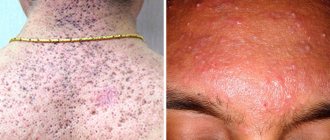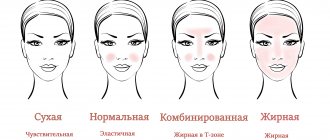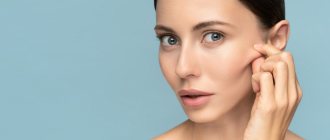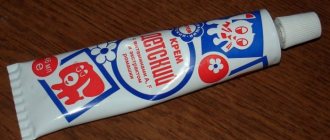Dermatovenereologist (cosmetologist)
Baichorova
Marua Azretovna
21 years of experience
Dermatologist (cosmetologist)
Make an appointment
The constant process of skin renewal can cause blockage of the sebaceous glands and follicles. Getting into microscopic holes, excess sebum and dead cells of the exfoliated epidermis lead to the appearance of blackheads or pimples. Experts have united them under the name “comedones”. The situation is aggravated by the lack of proper skin care, exposure to unfavorable sanitary conditions, as well as the intense production of sebum, the excess of which clogs the ducts and hair follicles.
The vast majority of cases of comedones are observed on oily facial skin: on the nose, forehead and cheeks. According to most medical specialists, such a pathology is true evidence of hormonal imbalances, hidden dermatological problems and malfunctions of the liver and gastrointestinal tract. Therefore, patients who experience discomfort from their appearance are advised not to focus on the cosmetic problem, but to undergo a comprehensive examination to identify possible diseases of the internal organs.
Pathogenesis
Comedones occur as a result of excess sebum synthesis and disruption of the keratinization process - the formation and exfoliation of cells in the stratum corneum of the skin. As a result, characteristic plugs are formed at the mouth of the hair follicles, which fill them. Thus, sebum loses the opportunity to leave the follicle and begins to accumulate in it, forming cysts.
The removal of toxins through the pores of the skin is also impaired. They interact with sebum, forming a thick, glue-like mass. A mixture of toxins, sebum, partially released from the narrowed mouth of the follicle, as well as skin bacteria and dust, becomes dark under the influence of oxygen. This is manifested by the formation of black dots on the skin. When the orifice is completely blocked, the follicle greatly increases in volume, which leads to the formation of a white nodule.
Open comedones on the back and acne on the face. Photo: Chinese Medical Journal / Open-i (CC BY-NC-SA 3.0) and Roshu Bangal / Wikipedia (CC BY-SA 4.0)
How to care for skin with closed comedones
Skin care for comedones necessarily includes professional removal and accompanying home care.
The correction scheme includes 3 stages that allow you to eliminate the problem forever.
Mechanical skin cleaning
A widely known and not always popular procedure. In the case of white comedones, it is irreplaceable.
- Resorption or dissolution of closed comedones with external means is impossible. Only mechanical intervention can remove existing blockages.
- The disadvantage of this method is that the effect is temporary. New elements will appear later, because... the skin functions as before.
What should you do: constantly extract closed comedones using a needle?
No, the procedure is carried out at least once a month until the white comedones completely disappear, which is only possible with concomitant external therapy aimed at normalizing sebum production and exfoliating dead cells.
Daily skin care
The drugs of choice for closed comedones are retinoids.
Retinoids are a well-studied group of substances derived from vitamin A, used in dermatology to treat problem skin with acne, and in cosmetology to correct age-related changes and hyperpigmentation. ⠀
How retinoids work:
- They penetrate the hair follicle and exfoliate the sebaceous gland duct. Naturally influence the processes of keratinization and exfoliation of skin cells - eliminate hyperkeratosis. Thus, the outflow of the pore contents is ensured.
- They reduce the activity of sebocytes, reducing the production of sebum and reduce the density of sebum, facilitating its secretion.
- They relieve the inflammatory reaction around the gland (remove the pink halo around closed comedones), preventing further development of the process into inflamed acne.
In accordance with the Federal Clinical Guidelines for the Management of Patients with Acne, 2015, retinoids are the first-line drugs for acne correction, including the initial stages.
Benefits of Retinoids
Why else are retinoids attractive in terms of choice for eliminating white comedones:
- physiological – they are a substance familiar to the skin, because the body itself supplies vitamin A to the skin in low concentrations;
- do not have a toxic effect;
- penetrate well into the skin, reaching the necessary layers;
FAQ (frequently asked question) Can retinol be recommended in the summer?
Previously, there was an opinion that retinol should not be used in the summer. It has now been proven that retinol does not increase skin photosensitivity!
Yes, retinol thins the stratum corneum, eliminating stratum corneum, but at the same time, by stimulating cell division, it thickens the epidermis as a whole.
Summary: The sun is not a contraindication for the use of retinol.
It is recommended to use preparations containing 0.3 - 0.5% retinol, or more gentle forms. This allows you to use retinoids regularly, every evening, without getting confused in complex application regimens. And without provoking skin irritation and peeling.
Example:
Renewing cream with Retinaldehyde DermaQuest is a godsend for daily saturation of the skin with retinoids without unwanted consequences.
Benefits of the cream:
Contains a new form of retinol – retinaldehyde at a concentration of 0.05%;
The composition is enhanced with a Vitamin A simulator - Bakuchiol - increasing the effectiveness of retinaldehyde;
Contains antioxidants and moisturizing complexes - powerful prevention of inflammation and irritation of the skin, preservation of its barriers;
The difference between retinaldehyde and retinol:
- 10 times more active than retinol!
- does not cause retinoic dermatitis
- used daily
- stable to oxidation
- comfort and safety of use for sensitive skin
Application:
Apply the cream daily in the evening to clean skin.
Another type of product that is mandatory for use for closed comedones is Sunscreen with SPF based on mineral photo filters. (link to an article on the selection and use of sunscreen for oily and problem skin here .)
The sun's rays activate the sebaceous glands, which increases the number of blockages. The choice should be made in favor of physical photo filters - a mineral screen.
Chemical photo filters are contraindicated. Their operating principle is based on converting the energy of UV rays into heat, which additionally activates the work of the sebaceous glands.
Example:
Mineral cream SPF 30 with zinc DermaQuest based on micronized zinc oxide 18.6% is a universal sunscreen for all family members!
- Does not penetrate deep into the skin and does not cause blockages
- Safe and hypoallergenic
- Blocks up to 97% of sun rays
- In 2022, the composition is enriched with BlueLight filters against blue light
The advantages of modern creams with SPF are not only photoprotection, but complete care products that do not require the application of additional creams in the morning.
Classification of comedones
In clinical practice, comedones are divided into 2 types:
- Open. They are plugs of sebum and skin cells that block the entrance to the hair follicle. Oxidizing upon contact with air, they become black, which is why they look like black dots with a diameter of 0.5-1.0 mm.
- Closed. Clogged hair follicles, which, due to the secretion accumulated in them, expand, forming small cysts. On the skin they look like nodules about 1 mm in diameter, white or reddish.
Since comedones are one of the manifestations of acne, in clinical practice the American Academy of Dermatology classification is used to assess skin lesions. It includes 4 degrees of disease severity:
- I degree. The presence of comedones and up to ten papules - small pink blisters, sometimes with a black dot in the center.
- II degree. A combination of comedones and papules, with the appearance of no more than 5 pustules - pustules.
- III degree. Combination of comedones and papulopustular rash. In this case, no more than five nodes appear on the skin.
- IV degree. Severe inflammation of the skin with the formation of painful nodes and cysts.
Also, to assess the severity of comedonal lesions, the Cook scale² can be used, which evaluates the severity of the pathological process in points:
- 0 points. The presence of several small comedones or papules, which are noticeable only upon careful examination.
- 2 points. There are 1-2 open or 20-30 closed comedones on the skin. At the same time, up to ¼ of the surface of the facial skin is covered with small papules in a total number of up to 6-12 pieces.
- 4 points. Small papules or comedones are observed on more than ½ of the facial skin. There may also be several pustules and large comedones protruding above the surface of the skin.
- 6 points. About ¾ of the face is covered with papules and/or large open comedones, which are combined with many pustules.
- 8 points. Skin rashes are located on almost the entire surface of the face, large pustules appear.
Figure 1. Open and closed comedones. Image: mikrostoker/Depositphotos
Varieties and features
The skin is sensitive to lack of care and disruptions in the body. Among the symptoms that precede the appearance of subcutaneous comedones, most patients note:
- a sharp increase in skin oiliness;
- density and roughness of the skin;
- change in natural skin color to an unattractive pale gray-green shade;
- dense nodules, indicating blockage of the sebaceous glands and hair follicles.
There are open and closed comedones, which differ in appearance. Black spots on the surface of the cheeks, nose and chin, the so-called T-zone, are an open form of the disease. Noticeable white sebaceous plugs under the skin are a closed type of pathology. They often develop against the background of hidden inflammatory processes due to skin damage by a fungal infection, staphylococcus or pathogenic bacteria. Lack of proper treatment causes plugs of purulent acne to appear at the site, which leave behind scars and scars.
The localization area for closed white comedones on the face is the forehead, nose and chin, as well as the décolleté and upper back. The appearance of formations on the body is often associated with wearing synthetic underwear and clothing, which does not allow air to pass through and causes the skin to secrete sweat. Trying to fight comedones by squeezing in unsanitary conditions only aggravates the problem. The pustular infection spreads to nearby healthy areas of the skin, and the disease progresses rapidly. And in place of the squeezed out formations there remains a serous crust and an inconspicuous scar, indicating damage to the skin.
Open comedones, or blackheads, acquire an unpleasant appearance due to contamination of the sebaceous plug with dust or residues of cosmetics. When exposed to air, the contents of the sebaceous duct oxidize and darken, making it visible on the surface of the skin. Removing such comedones does not bring the expected effect. The empty gland duct soon becomes clogged with fat, and the disease again makes itself felt with an unpleasant cosmetic effect.
Symptoms of comedones
Early signs of comedones are roughening of the skin and visually noticeable enlargement of pores, which is often combined with increased oiliness and a tendency to peeling. In this case, the color of the skin often changes - it may acquire a grayish or greenish tint.
Next, comedones are formed directly. Externally, depending on the type, they appear as black dots or white nodules. The last few protrude above the skin level and are prone to inflammation, which leads to redness of the skin and moderate pain when touched.
Most often, comedones are located on the skin of the face, upper chest and back. The quantity depends on the individual characteristics of the body, concomitant diseases and can range from 3-7 to 100-150 pieces.
When to see a doctor
Experts recommend not delaying a visit to the doctor if symptoms of inflammation and blockage of the sebaceous glands appear. You should not put up with an unpleasant cosmetic effect or try to cope with it using home methods, at the risk of intensifying the pathological process. Moreover, modern medicine has at its disposal many effective methods of combating the disease, depending on the type and general condition of the skin.
Are you experiencing symptoms of comedones?
Only a doctor can accurately diagnose the disease. Don't delay your consultation - call
Risk factors
In addition to the main reasons, there are a number of factors that increase the risk of developing comedones. The most significant include:
- Hereditary predisposition.
- Frequent stress and emotional overstrain, lack of sleep.
- Natural fluctuations in hormonal levels, including during puberty and the transition to menopause.
- Endocrine diseases: hyperthyroidism, diabetes mellitus type 1 and 2, polycystic ovary syndrome, hyperandrogenism.
- Poor nutrition: excessive consumption of flour and confectionery products, whole milk products, fatty and fried foods.
- Smoking and excessive consumption of alcoholic beverages.
- Pathologies of the gastrointestinal tract: gastritis, peptic ulcer of the stomach and duodenum, dysbacteriosis.
- Friction or pressure on the skin, such as the use of mobile phones, helmets, tight collars and backpacks.
Pregnancy and the onset of menopause
One of the important triggering factors for comedones is hormonal imbalance.
Quite often this is due to a change in the ratio between male and female sex hormones (androgens and estrogens). Natural hormonal changes in the body, for example, occur during pregnancy and at the beginning of menopause. The sebaceous glands are also part of the endocrine system and are controlled by androgen receptors. Steroid sex hormones (dihydrotestosterone) are responsible for the synthesis of sebum. As a result of sharp fluctuations in the ratio of androgens and estrogens, the synthesis of sebum is stimulated, and the division of cells in the stratum corneum of the skin increases, which often leads to the formation of comedones.
Complications of comedones
With prolonged exposure to trigger factors, as well as improper treatment, comedones can lead to various dermatological complications. The most common among them are:
- Ostiofolliculitis. Inflammation of the hair follicle or sebaceous gland. Externally it resembles a subcutaneous node. In this case, the skin over the boil becomes thinner, becomes bluish, and a white dot appears in the center - a purulent core.
- Intradermal cysts. They are a subcutaneous cavity formation and are the result of purulent melting of inflamed comedones. After healing, a rough connective tissue scar is left.
Is it possible to squeeze out comedones?
Despite the fact that one of the treatment options for this pathology is facial cleansing with mechanical removal of comedones, you cannot squeeze them out yourself. Possible complications:
- Post-inflammatory erythema. Redness of the skin, a residual phenomenon after inflammatory skin lesions. It occurs as a result of damage to local blood vessels or due to strong pressure on the skin, including when trying to squeeze out a comedone on your own.
- Pyoderma. When manually removing a comedonal rash, there is a high risk of introducing infection (pathogenic staphylococci and streptococci) into the damaged follicles. In addition to ostiofolliculitis, such actions can provoke the appearance of a boil, carbuncle, various forms of impetigo and other variants of pyoderma.
- Scarring. Rough mechanical impact on comedones, especially closed forms, often leads to deep skin damage and the formation of persistent connective tissue scars that look like pink or whitish stripes or spots.
Comedones localization zones
There are comedones on the face of any person, the only difference is how many open and closed sebaceous plugs there are and where exactly they are located. There are no special reasons leading to the appearance of comedones on the face; these are the same hyperfunction of the sebaceous glands, hyperkeratosis and diseases of the internal secretion organs. However, the face is in a special position - it is always open, which means that the likelihood of dust and dirt from the atmosphere getting on it is much higher compared to the body . Temperature changes, wind, and precipitation do not have the best effect on the condition of the facial skin: the work of the sebaceous glands, trying to compensate for harmful external influences, is activated, and the pores expand and become clogged not only with sebaceous plugs, but also with dirt particles. Often the cause of the appearance of comedones on the chin, nose, forehead and cheeks (in these places black and white dots are found due to the increased concentration of sebaceous glands) is dirty hands with which a person touches the face. Somewhat less often, comedones affect the skin under the eyes - white closed comedones (milia) often appear in this area.
Comedones on the body can appear in any area where there are sebaceous glands and hair grows, even if it is completely invisible vellus hair. Clothes made of synthetic materials can provoke the appearance of white and black spots , since thermoregulation processes are disrupted in them. In particular, comedones on the back occur if the skin temperature rises - this leads to the opening of the mouths of the follicles and sebaceous glands, into which sweat particles enter along with bacteria that multiply quickly in such conditions. As a result, the pores become clogged and the free flow of skin secretions is disrupted. The same pattern is used to form comedones on the chest and neck.
Diagnostics of comedones
The diagnosis is established by external examination of the affected areas of the skin by a dermatologist. If necessary, dermatoscopy is performed - examination using magnifying glasses of a dermatoscope.
Interviewing the patient also plays an important role, helping to identify existing risk factors and concomitant diseases. If the latter are present, additional consultations with related specialists (for example, an endocrinologist), laboratory or instrumental studies may be prescribed.
Differential diagnosis of comedones is carried out with other skin diseases that may have similar manifestations. These include:
- Hyperplasia of the sebaceous glands.
- Warts.
- Milia.
Treatment of comedones
Therapy must be comprehensive. This involves treating not only skin lesions, but also eliminating the cause of their appearance, for example, prescribing hormonal therapy for endocrine pathologies. The fight against comedones directly includes the use of medications and mechanical removal of acne.
Drug therapy
An effective method of treating comedones is the use of comedolytics (retinol, retinoic acid, zinc, salicylic acid). These are medications that can prevent blockage of the hair ducts, normalizing the growth of skin cells and the secretion of sebum.
Mechanical removal of comedones
A dermatologist or cosmetologist can remove comedones mechanically. In this case, a Uno spoon or a Vidal needle is used. As a preliminary preparation, skin cleansing can be carried out - chemical peeling and microdermabrasion. Their goal is to remove particles of dust, bacteria and sebum from the surface of the skin, thereby preventing the development of complications. After the procedure, special cosmetics with anti-comedogenic properties are applied to the skin.
Other methods of cleaning the skin are also used:
- Disincrustation. It involves removing comedones using weak current discharges.
- Ultrasonic cleaning. The technique is based on the use of ultrasonic waves that gently cleanse pores. Helps improve the overall condition of the skin.
- Vacuum cleaning. The essence of the technique is to remove plugs using a vacuum.
You can’t squeeze out comedones yourself! Only a cosmetologist or dermatologist can remove comedones. Photo: kukuruzaphoto / freepik.com
Question answer
If they appear, then there are some problems. These can be not only pathologies, but also simple improper care. That is why it is worth starting to take better care of your skin, this is the only way to improve the situation. And comedones are unlikely to go away on their own.
All methods have their advantages. But laser, ultrasonic cleaning, and chemical peelings can boast of particular popularity.
This is absolutely impossible to do. The fact is that there is a risk of infection and scarring.
Alternative therapy
In the fight against comedones, especially against the background of acne, the following natural remedies can be an effective addition to the main treatment³:
Tea tree oil. Gels containing at least 5% tea tree oil can be as effective as benzoyl peroxide lotions. Possible side effects include mild itching, burning, redness and dry skin.
Brewer's yeast. When taken internally, a strain of brewer's yeast called Hansen CBS may help reduce acne. A common side effect is increased gas production in the intestines (flatulence).
Factors contributing to acne
There are reasonable claims that the phenomenon of comedones appears on the face due to the abuse of cosmetics, hormonal disorders, poor ecology, long-term use of antibiotics or hormones, and stress. Also, a photo with signs of the disease is expected with a genetic predisposition.
Features of nutrition and skin care
Nutritional correction for comedones involves excluding from the diet foods that increase sebum production. First of all, these are foods with a high glycemic index or fast carbohydrates. These include:
- Confectionery.
- Chocolate.
- White bread and pastries.
- Sweet carbonated drinks.
- Dairy and fermented milk products: milk, kefir, yogurt, fermented baked milk, cottage cheese, cheese.
- Trans fats: fast food and processed foods.
- Alcohol, coffee.
Why do comedones “love” those with a sweet tooth?
Consumption of large quantities of confectionery products is associated with a sharp increase in blood glucose levels, which entails a response increase in the production of insulin by the pancreas.
The hormone insulin takes part in the activation of androgen receptors in the sebaceous glands, while simultaneously increasing the level of dihydrotestosterone. As a result, sebum production increases, which is one of the provoking factors for the appearance of comedones. Whole milk and refined foods also contribute to a sharp increase in glucose and insulin levels. Figure 2. Products that provoke the appearance of comedones. Image: artcherich/freepik.com
We also note a number of products that can help to cleanse the skin faster and prevent the appearance of new comedones. This list includes:
- Products rich in zinc: chicken and beef liver, boiled beef tongue, roast beef, pumpkin and watermelon seeds, pine nuts.
- Fatty varieties of sea fish rich in omega-3 fatty acids: mackerel, tuna, sardines, salmon, cod liver.
- Vegetables and berries: carrots, sea buckthorn, parsley, celery, raspberries, blueberries, black currants.
Caring for problem skin at home should take into account the following tips and recommendations:
- Regular cleansing of the skin with special products for excessive oiliness. At the same time, cosmetics should not foam, contain alcohol or surfactants. You can also use toners containing comedolytics for additional cleansing and moisturizing.
- When using creams, you should give preference to products with a more liquid texture, without intense fatty components.
- Application of peelings and polishing agents. These procedures and medications allow you to maintain the effects of the treatment at home. In this case, you should choose products with a low concentration of active ingredients and avoid harsh scrubs.
Hollywood Secrets
Many people, including world-famous people, are prone to skin problems. They use different approaches to combat acne and comedones. For example, Megan Fox makes oxygenating and restorative face masks and cleanses her skin daily morning and evening. Cameron Diaz gave up fast food, and Rihanna gave up alcoholic drinks (these products provoke acne). Victoria Beckham eats salmon every day, Scarlett Johansson washes her makeup brushes once a week and never goes to bed with makeup on her face.
How to get rid of comedones?
In case of comedonal acne, facial cleansing can be performed. The most primitive is the mechanical one, when a specialist removes comedones with his hands or an instrument. But this is a traumatic procedure, which is better replaced by an ultrasound, atraumatic technique. Peels can also be carried out with fruit acids; they act as a means to “dissolve” comedones. But only a specialist should carry out the procedures in a clinical setting.
Acne can be treated at home. For mild to moderate acne, Azelik® gel, which contains azelaic acid, can be used for this purpose.5
An effective remedy against acne is considered to be one that affects several parts of its pathogenesis. The main ones include: inflammation, follicular hyperkeratosis, increased colonization of propionibacteria, increased sebum production. For mild acne, as a rule, the use of topical medications is sufficient; for moderate and severe acne, systemic medications are added to them.
Prevention
You can prevent the appearance of new comedones by paying attention to the following preventive recommendations:
- Do not squeeze out any skin rash yourself.
- Follow the rules of personal hygiene and skin care.
- Refuse excessive use of cosmetics, avoid using low-quality cosmetic products.
- Normalize your diet, avoid foods that increase sebum production.
- Avoid stress, overwork, lack of sleep.
- Give up bad habits: smoking, alcohol abuse.
- Treat endocrine and somatic diseases in a timely manner.
- Regularly visit a dermatologist or cosmetologist to promptly identify skin changes and correct them.
Etiology of the disease
The opinion that comedones appear only in adolescents and young adults is not entirely true. They occur in up to 85% of patients under 25 years of age, after which sebum production decreases and the conditions for blockage of the glands disappear on their own. Also, women often suffer from the disease during pregnancy and at the onset of menopause, when the body experiences a significant hormonal load. The intensive development of the disease can be caused by unsanitary working or living conditions, lack of proper skin care, neglect of hygiene rules and other reasons due to which the adverse effects on the skin of the face acquire such unpleasant consequences. Refusal to treat comedones can cause the formation of scars and age spots at the site of the rash, which can only be eliminated using plastic surgery methods.










